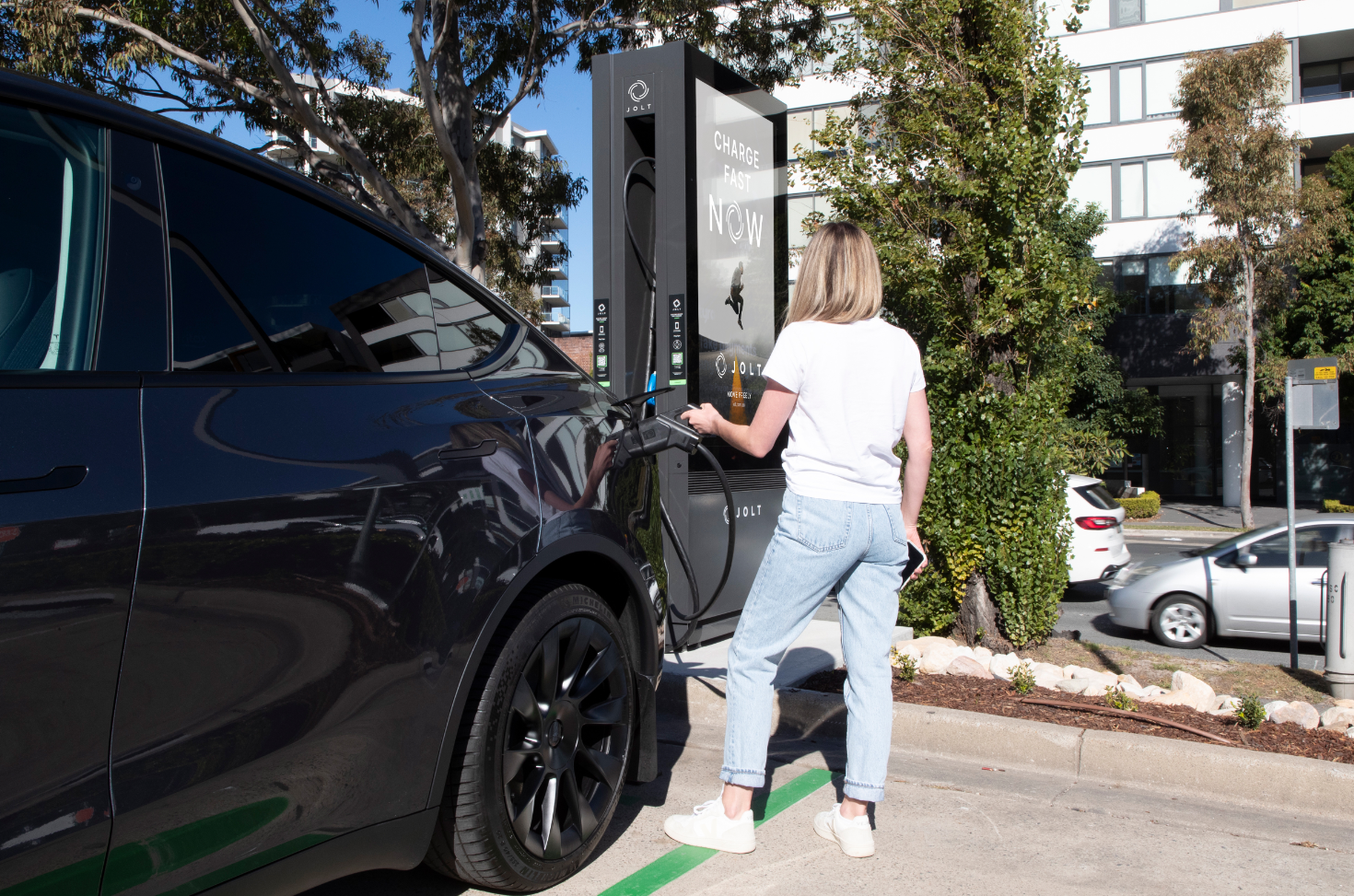Support journalism that lights the way through the climate crisis by June 3
As wildfires rage across the country, the need for Canada to move away from its reliance on fossil fuels — a major driver of climate change, which has exacerbated this year’s fires — is becoming increasingly urgent. To meet its climate targets, the government of Canada has mandated that all new passenger vehicles must be electric by 2035 — an effort to curb pollution from transportation, which currently accounts for 25 per cent of Canada’s greenhouse gas emissions.
To meet this target, Canada is in dire need of infrastructure to support the increase in electric vehicles (EVs) that will hit the road in the next decade. A 2022 report from the federal government stated the country will need 200,000 publicly accessible EV chargers by 2023. Currently, the country only has 16,640 publicly accessible chargers at 6,987 charging sites.
In response to Canada’s growing need, Telus has partnered with Australian EV company Jolt to install 5,000 EV chargers across Canada beginning this year. Drivers will be able to recharge up to seven kilowatt-hours for free, which equals 40 to 50 kilometres of driving range and takes 15 to 20 minutes of charging, according to Jolt. The company has partnered with a third-party monitor to ensure its chargers will only be powered by renewable energy, such as hydroelectric power, solar or wind.
“Our plan is to start rolling out this year, starting in Toronto, Calgary and Vancouver and building out from there,” said Jolt CEO Doug McNamee. “Matching the rollout pace with the rollout of EVs is part of our goal as well.”
Jolt and Telus will be installing DC fast chargers connected to Telus Wi-Fi. DC fast chargers, or Level 3 chargers, allow for a faster charge than Level 2 chargers, which currently make up the highest proportion of publicly available chargers in Canada. McNamee says faster charging capabilities may help to reduce Canada’s need for such a large number of chargers across the country.
“The faster the charge, the less charges you need,” said McNamee. “The public charging networks globally are consolidating around fast-charging infrastructure. Having more efficient use of land and of charging infrastructure more broadly is going to be key.”
The addition of fast-charging stations across the country is positive news for Canadians looking to transition to EVs in the coming years. However, these charging stations are not without limitations.
As the project is in its early stages, those who live in rural areas will have to wait longer for chargers to be installed near their homes. McNamee says the focus for Jolt right now is to install EV chargers in major cities “where the vast majority of people live,” though McNamee did say installing EV chargers in remote areas in Canada will be a part of Jolt’s “future plans.”
For drivers looking to recharge more than seven kilowatt-hours, there will also be a cost associated. The average electric vehicle has a usable battery capacity of 68 kilowatt-hours, so drivers looking to fully charge their vehicles will need to pay. McNamee says Jolt and Telus are still working to determine pricing for the Canadian chargers. In Australia, it costs AUD$0.46 per kilowatt-hour to use a Jolt charging station after seven kWh of charge, according to McNamee. That is equivalent to approximately C$0.41 per kilowatt-hour.
It takes Jolt chargers roughly an hour and a half to fully charge the average electric vehicle, according to McNamee. However, the average usage time for the chargers in the company’s network is 22 minutes. Jolt and Telus aim to give Canadians affordable access to charging stations within their communities. These chargers are most commonly used to increase driving range, not to fully recharge the car’s battery, but are still a much-needed addition to the country’s EV infrastructure.
For those who are considering purchasing an electric vehicle but are hesitant due to the limitations of the country’s current infrastructure, McNamee suggests considering how you typically use your car on a regular basis.
“There's often a misconception about exactly how people use their car,” said McNamee. “[People] are focused on really long ranges for a very small number of trips. If you think about living in a city, you do your daily commute 99 per cent of the time. People are pleasantly surprised with both the range and the improvement in the driving experience [that comes with EVs].”
Just drove from Guelph ON to
Just drove from Guelph ON to Windsor NS with an EV. There is a need for well marked fast chargers along main highways, at regular intervals. It is disconcerting to keep searching and sometimes encountering chargers that don't work.
Yes, Canada has the 'no ICE
Yes, Canada has the 'no ICE after 2035' rule in place, and who knows if Canada will stick to its guns and not allow extensions, but the move to BEVs is of no use if the electrical grid continues to be powered with carbon sources. Here in Ontario, the Ford government is planning to replace the aging nukes with methane ('natural' gas to those that ascribe to industry green-washing). Switching to methane negates most of the benefits of going electric. While I believe Ontario is the only province planning to go backwards on de-carbonization, it is not the only province with a high-carbon grid, and these provinces need to be forced by the federal government into cleaning up their act through carrot and stick (legislation and incentive).
I've been electric for 5 years now and love it. That said, I'm able to use a well appointed manufacturer's proprietary charge network, but can well imagine the frustration of using the current spotty public network. There's a long way to go before the public system matches the only proprietary charge network out there, which is of course still expanding rapidly itself. BEV buyer beware, not all BEVS are equal.
Adding residential solar is a
Adding residential solar is a great option for providing clean energy for your EV and reducing your energy bills.
It's too bad Telus or Jolt
It's too bad Telus or Jolt were not asked about the capacity of the proposed chargers for this article. A 50 kW charger is no longer significant news now that higher vehicle charging speeds are the norm.
There is a chicken and egg
There is a chicken and egg situation here. Some say that more chargers are needed, but try to buy an EV in Ontario! There is none to be bought.
As soon as they can get their EV, many will install their own charger at their own cost. Some will use photovoltaic power.
The Government needs to put pressure (penalties) on manufacturers to switch more of their capacity to EV's rather than continue to make money with internal combustion vehicles.
Not many vehicles get more
Not many vehicles get more than 5km/kWh, so 7 of them is about 35km for most.
What's crazy is malls not installing these along the wall of the mall. Those are the places where you WANT people to linger and wander around and spot something to buy.
B.C.Hydro has installed 100
B.C.Hydro has installed 100 kW chargers in Kensington Plaza, in North Burnaby. This now makes it practical for anyone living in the area to own an electric car as it can be charged while its owner is shopping.
The problem remains of dealers not having electric cars for sale, or even wanting to sell you an electric car.






Comments